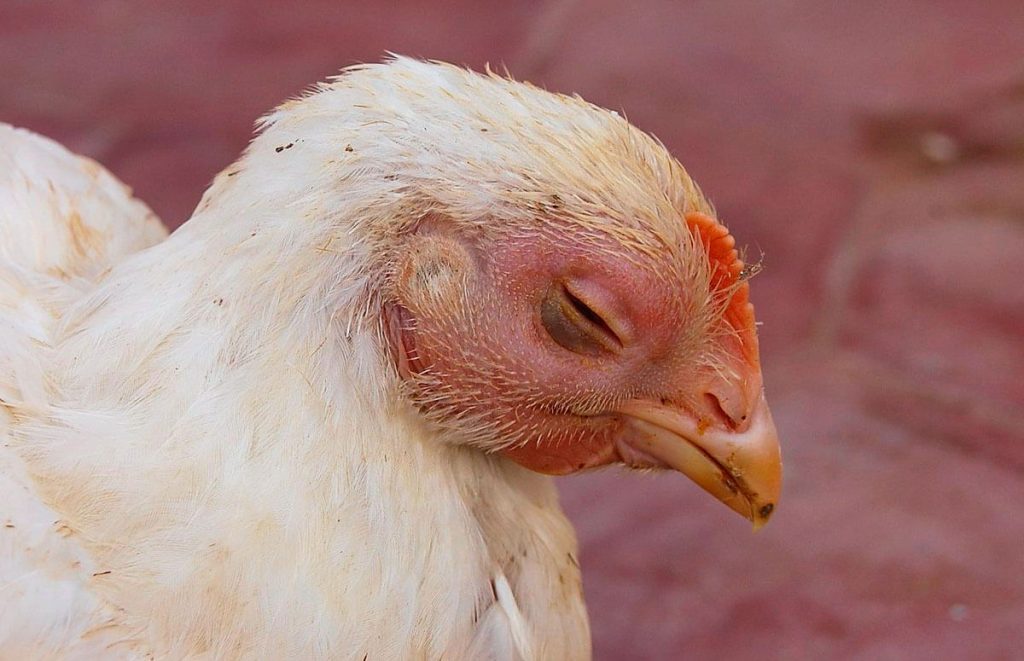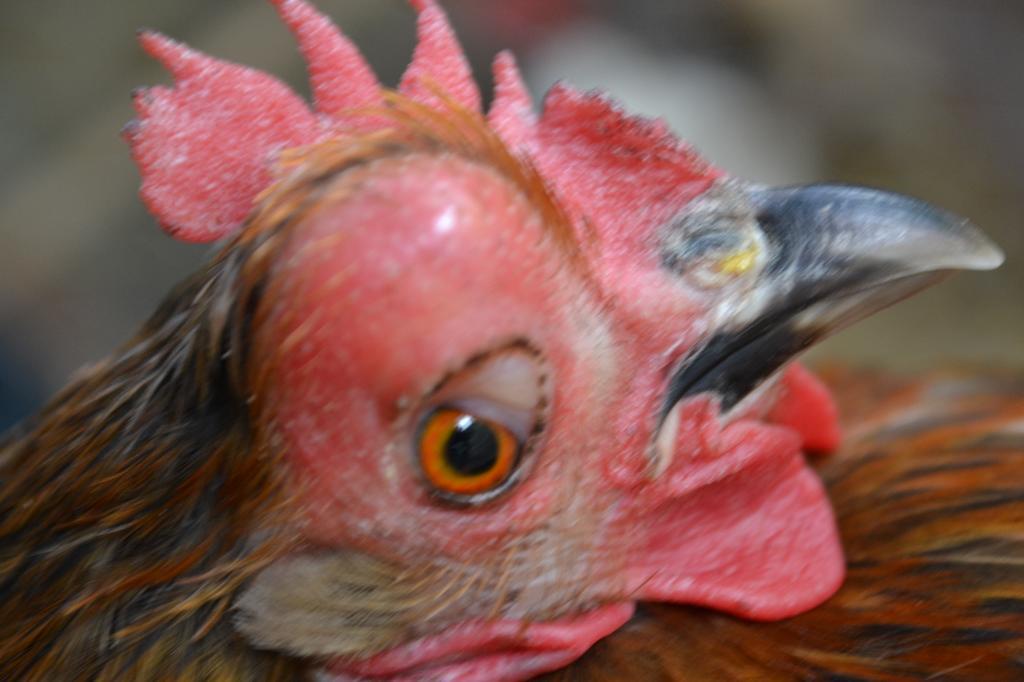
Eye Infections In Chickens 12 Causes & Treatments Chicken Fans
An eye worm is a thin white worm that can infect a chicken's eye. Chickens get infected by eating an infected Surinam cockroach or from contact with wild birds that are carriers of the eggs.. Apart from the above symptoms, the chicken's face is swollen, and there is foul-smelling discharge on the nares and beak. Some birds have diarrhea.
Please help! Hen with swollen eye BackYard Chickens Learn How to Raise Chickens
Their eyes become red with a noticeable mucus secretion, and the face will be swollen around the eyes. Infected chickens will also be lethargic with a low appetite. Treatment. There is no known cure for Swollen head syndrome, but the disease can be prevented through vaccination. As it is very contagious, infected birds should be quarantined.

My Chickens Eye Is Swollen YouTube
It affects chickens of all ages, although illness tends to be more severe in mature chickens. In the United States most cases are mild. The usual first sign is watery eyes, which may appear as tiny bubbles in the corner of the eye. The eyes may become swollen. The chicken may cough and sneeze, shake its head and stretch its neck while gulping.
Chicken with massive swollen eye, possibly spreading through flock? BackYard Chickens Learn
Wrap the chicken in a towel or restrain it under your arm. Hold its head in one hand. Place the syringe at the left side of the chicken's beak, pointing toward the throat. Your bird may automatically open its mouth, or it may need to be forced. Put the tip of the syringe into the mouth and press the plunger in one smooth motion, to administer.

One swollen and bubbly eye... BackYard Chickens Learn How to Raise Chickens
The typical clinical signs seen in chickens infected with the virus include swelling of the periorbital and infraorbital sinuses, particularly around the eye, coupled with mild conjunctivitis. Avian chlamydiosis: Avian chlamydiosis (AC) is a zoonotic respiratory disease of chickens caused by gram-negative bacteria from the Chlamydia genus.

CHICKEN EYE INFECTION Symptoms, Remedy and Clearing the eye YouTube
The most distinguishing symptoms of infectious coryza are swelling of the face (as seen in image 1) and nasal and eye discharge,. Additionally, common respiratory signs like coughing and sneezing may be present and the wattles may be swollen (especially in male chickens). Coryza does not usually result in death but will cause a serious drop.
FINALLY! SWOLLEN EYE SINUS LUMP SWELLING CURE TREATMENT BackYard Chickens Learn How to Raise
Conjunctivitis can occur in one or both eyes and may be a symptom of another condition or may be an infection of its own. Conjunctivitis is a localised swelling of the eye and tissues around the eye and is characterised by redness and puffiness. Conjunctivitis may be caused by: Bacterial, viral, or fungal infection.
Blind chicken/swollen eye BackYard Chickens Learn How to Raise Chickens
If you're allergic to chicken, you may experience immediate symptoms upon exposure, or symptoms may occur up to several hours later. Symptoms of a chicken allergy include: itchy, swollen, or.
Swollen eye BackYard Chickens Learn How to Raise Chickens
The cause of eye swelling in chickens can be identified by observing the bird and identifying other symptoms that will help determine what feathered pets are sick with. If the laying hen has inflamed eyeballs and tear ducts, it is necessary to treat eye swelling in chickens with tetracycline ointment and feeding the bird a large amount of.

Above eye severely swollen Please Help! BackYard Chickens Learn How to Raise Chickens
The most common signs of eye injuries in chickens include the following: Swelling of the eye. Excessive tearing. Bleeding from eye area. Sunken-in appearance of eye. Inability to open eye. Squinting or twitching of eyelid. Cloudiness or color changes to eye. Rubbing eye.

Chicken swollen eye YouTube
Swollen eyes in chickens can be caused by various bacterial infections. Here are the most common bacterial culprits and their treatments: Mycoplasma gallisepticum: This bacterium is a leading cause of swollen eyes in chickens. Treatment options include antibiotics such as tetracycline or erythromycin, administered orally or through the water.
Bantem Hen with very swollen eye please help
Chicken eye infections can be caused by physical injuries, chemical irritants, and infectious agents - bacteria, viruses, fungi, and parasites. Here is a close look at the 12 most common causes of eye infections in chickens. 1. Eye Injuries. Eye injuries in chickens often result in traumatic conjunctivitis.
swollen eyes and lethargic dying chickens (pics) BackYard Chickens Learn How to Raise Chickens
Other non-disease-caused eye problems can result from too much ammonia in the uncleaned coop, dust, debris kicked up by wind or chicken disputes, and loose down flying about to name a few. Infections While it's not always easy to pinpoint the exact cause, infections often play a significant role in swollen eyes.
Hen with Swollen eye lid BackYard Chickens Learn How to Raise Chickens
Step 2 Drying the eyes. The last swipe should be with a damp to moderately dry towel. You are trying to remove any excess moisture in the eye and so a dryer towel helps pressing on the eye and drying around his face. Similar with the swollen eye, you want to clean around and on top of the eye opening.
Help! Baby Chick With Swollen Eye! BackYard Chickens
Common signs of infection are otherwise healthy-acting chickens with sticky, swollen, or cloudy eyes. Additional symptoms such as sneezing, lethargy, or diarrhea indicate a more serious problem. This chicken's inflamed eye is a sign of an eye infection. The chicken looked healthy otherwise.
Closed red, swollen eye BackYard Chickens
Nov 8, 2011. 443. 12. 129. Louisville. You can get Tylan 50 injectable at Tractor Supply. The dosage for a larger chicken is 1/2cc and for bantams/small is 1/4cc. injected into the breast once a day for 3-5 days. You can also give it orally through an oral syringe, but you'd have to do it for about 5-7 days.